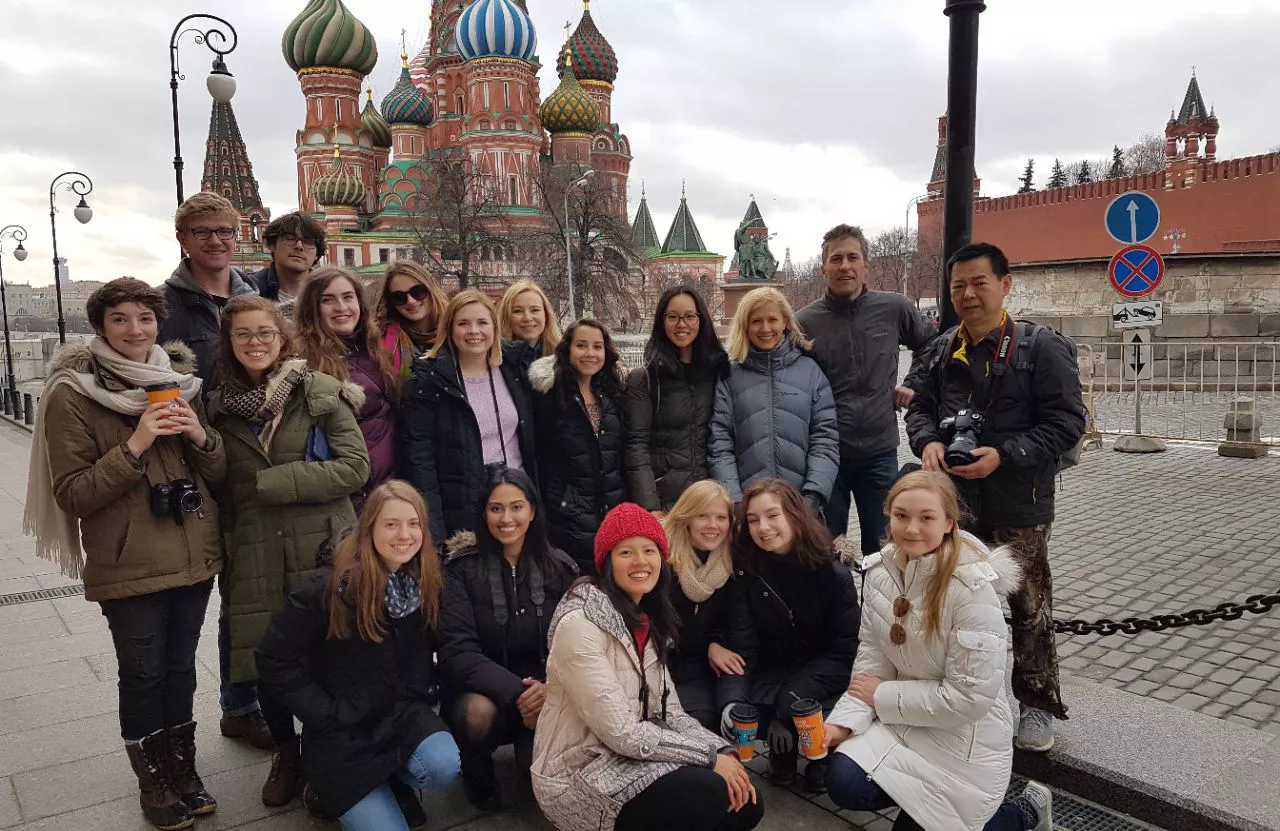
On a snowy winter day in southern Siberia, 15 students walked across the thick ice sheet covering Lake Baikal, the largest freshwater lake in the world by volume.
The lake was among the stops on an epic trip undertaken by students in the 360° Course Cluster Eurasia in Flux: Trans-Siberian Perspectives on Russia and China.
Their journey started in Moscow and took them to Yekaterinburg, Irkutsk, and Ulaanbaatar on the Trans-Siberian Railroad. The group spent two days in Mongolia before boarding the Trans-Mongolian Railway to Hohhot, China before catching a flight to Beijing, where they stayed for three days.
Chair and Associate Professor of Russian Tim Harte says that the Trans-Siberian Railroad formed the basis of the 360°’s concept, which is to explore the geopolitical, cultural, and social aspects of the Eurasian frontier.
“There’s no better way to check the pulse of the country than to travel by train in Russia,” says Harte.
Russian major Isabella Chaney ’19 agrees that riding the Trans-Siberian Railroad, which she describes as the backbone of Siberia, was the ideal way to experience the Russian East’s vastness and multicultural essence.
“I don’t think I’ve ever been so tired for so long as I was on this trip, but even when it was hard, it was incredible,” says Isabella. “We saw a continent and a half.”
Some highlights of the trip include visiting the site in Yekaterinburg where the last czar and his family were killed by the Bolsheviks, sleeping in yurts in Mongolia, and exploring the Great Wall, the Summer Palace, and the Forbidden City in Beijing.
In addition to leading the trip, Harte taught the course Russia and the East: Siberia in Russian Culture, which explores a variety of cultural manifestations of Russia’s eastern orientation.
The second course in the cluster is Environment on China’s Frontiers, taught by Associate Professor Yonglin Jiang in the department of East Asian Languages and Cultures. Jiang led the Chinese portion of the trip.
Eurasia in Flux was open to both Russian majors and students from other disciplines, and those without Russian language experience were required to take the class Intensive Survival Russian, which provided a crash course in the language and was taught by Irina Walsh, lecturer in Russian, who also helped lead the trip.
Harte says that the travel on the Trans-Siberian Railroad provided students with an ideal opportunity to further develop their Russian skills because fellow passengers are generally friendly, unrushed, and eager to communicate.
“This was the first time I’ve encountered people who only spoke Russian, and I couldn’t just break into English,” says Isabella. “It was a real challenge to explain what I meant in Russian even if I didn’t know the specific word, but definitely a good challenge.”
The Eurasia in Flux program will be holding a poster session for the community on Tuesday, April 25 from 1-4 p.m. in the Campus Center Main Lounge.
To see more photos of the trip, check out the Bryn Mawr 360° Program Instagram account.